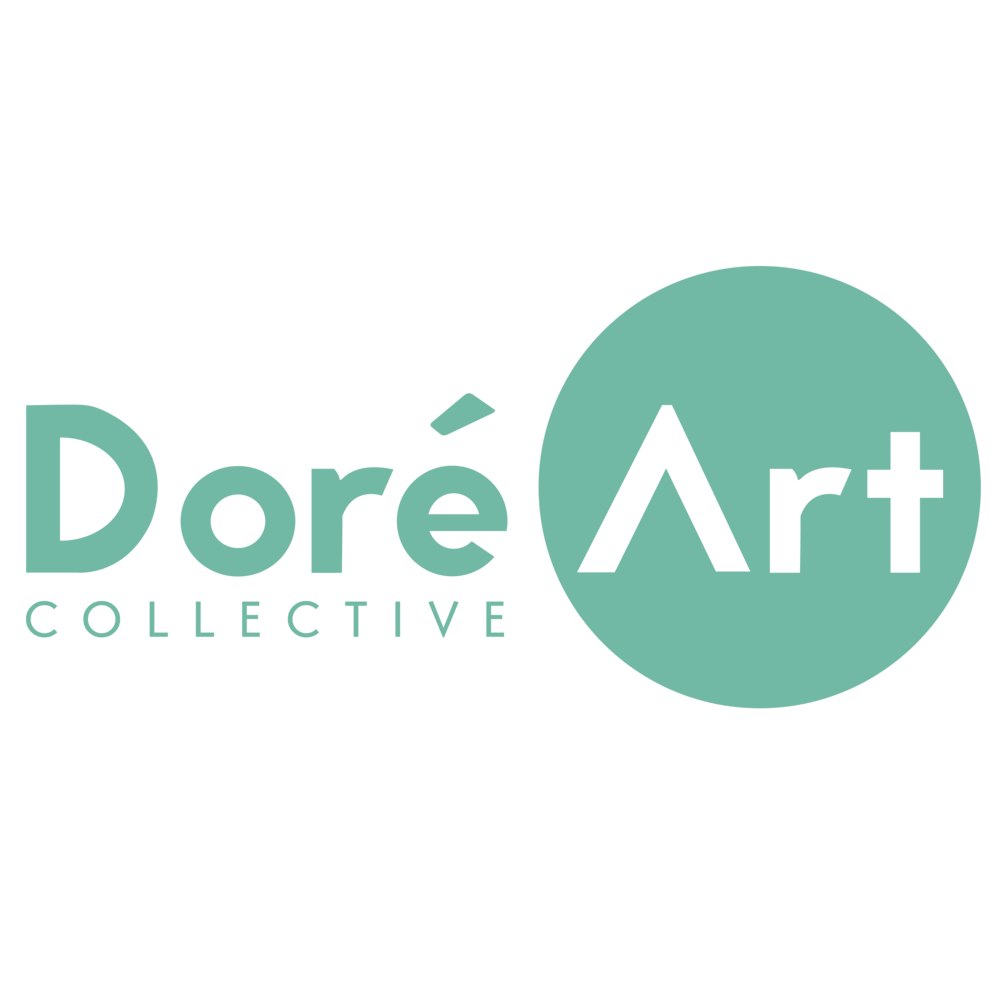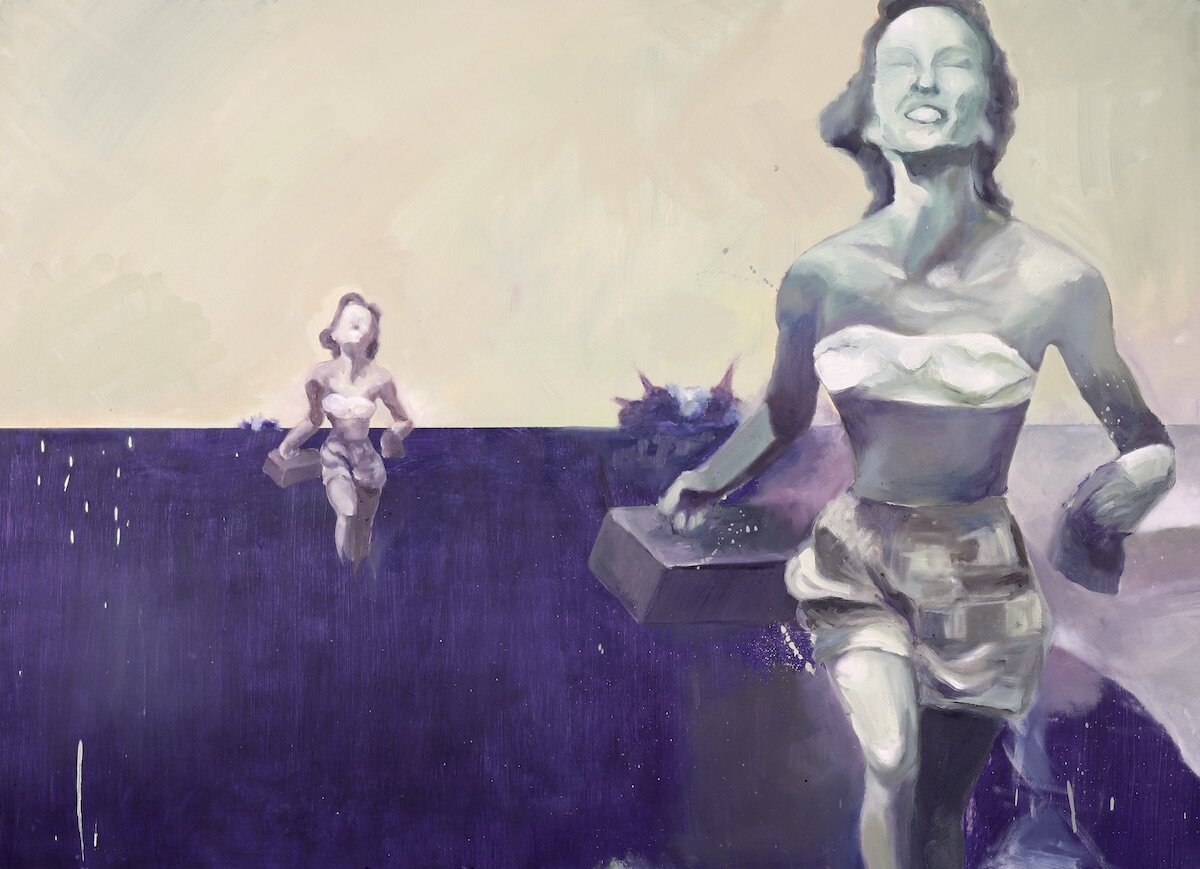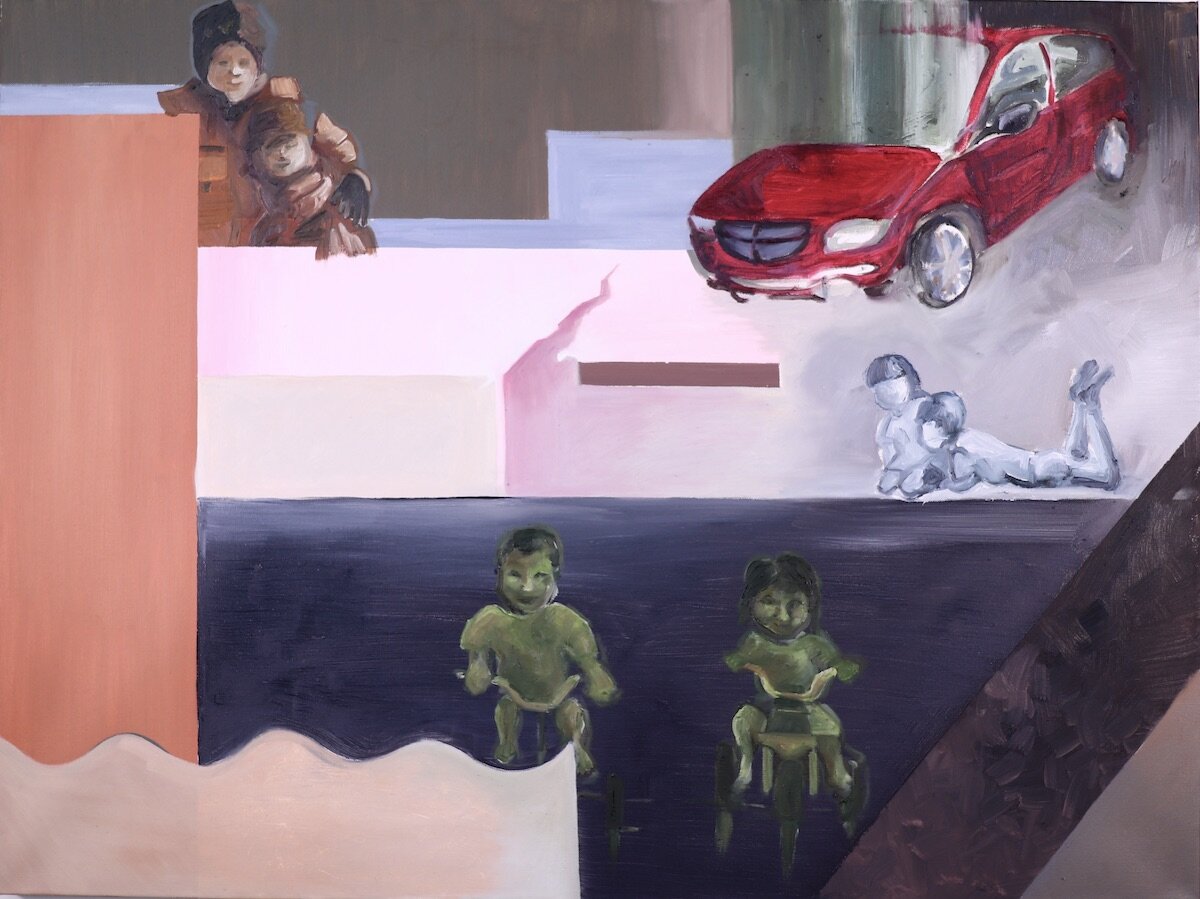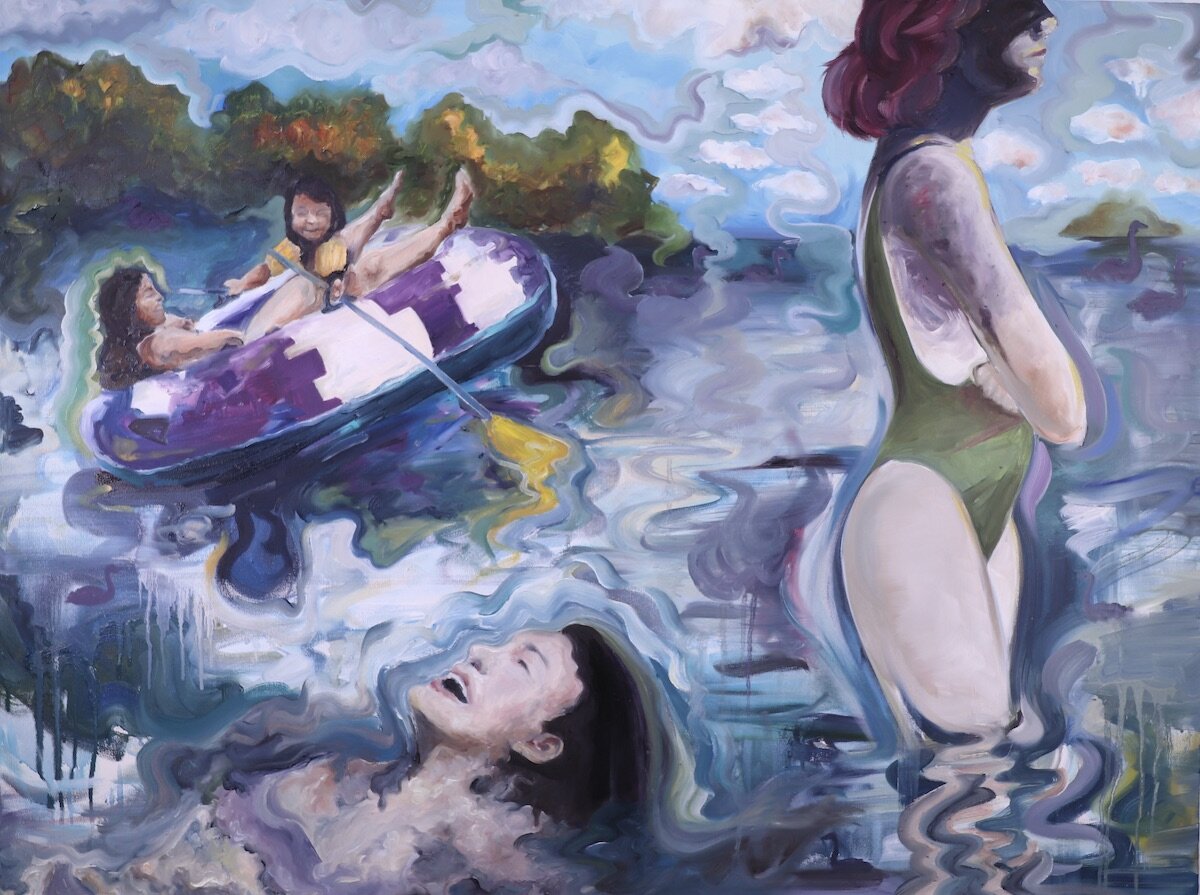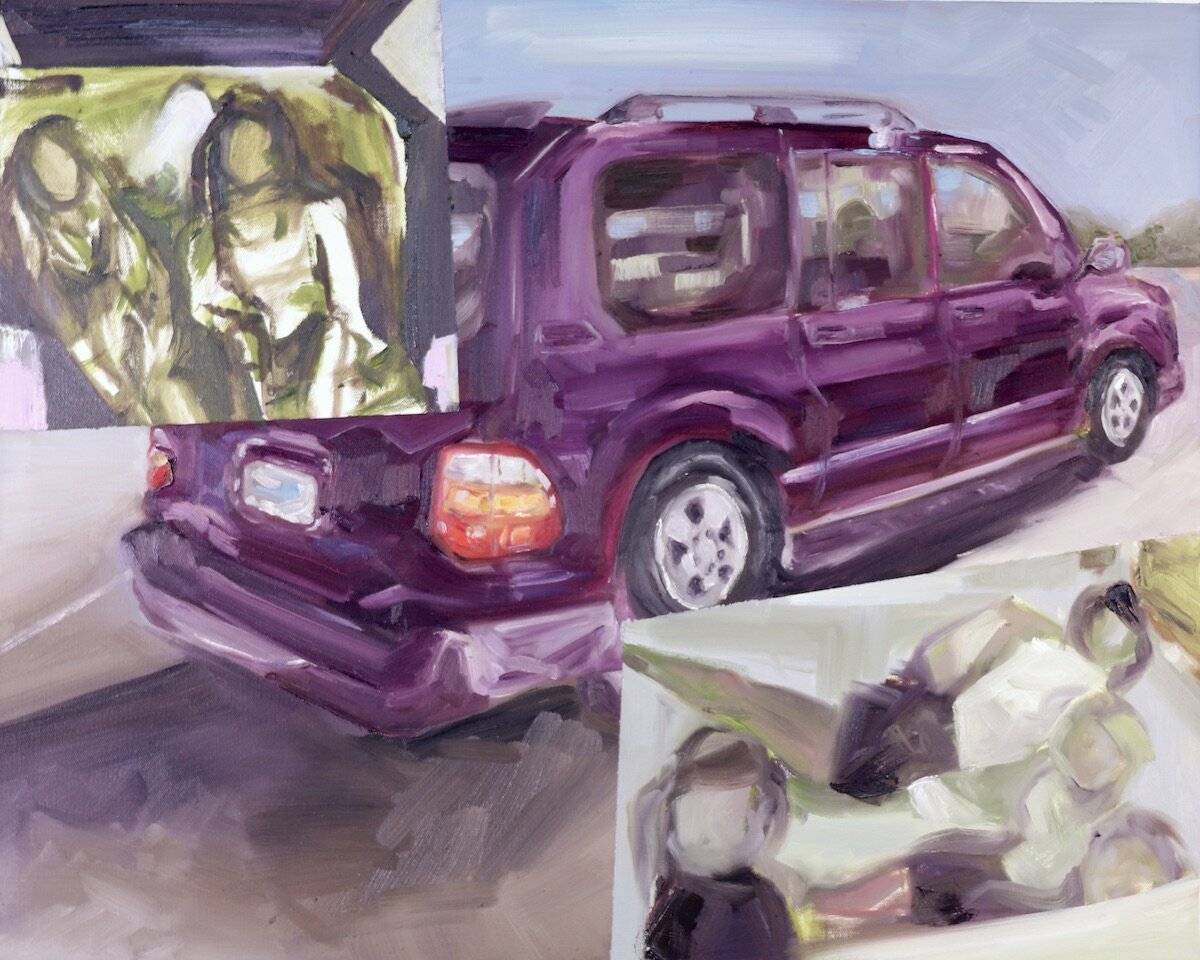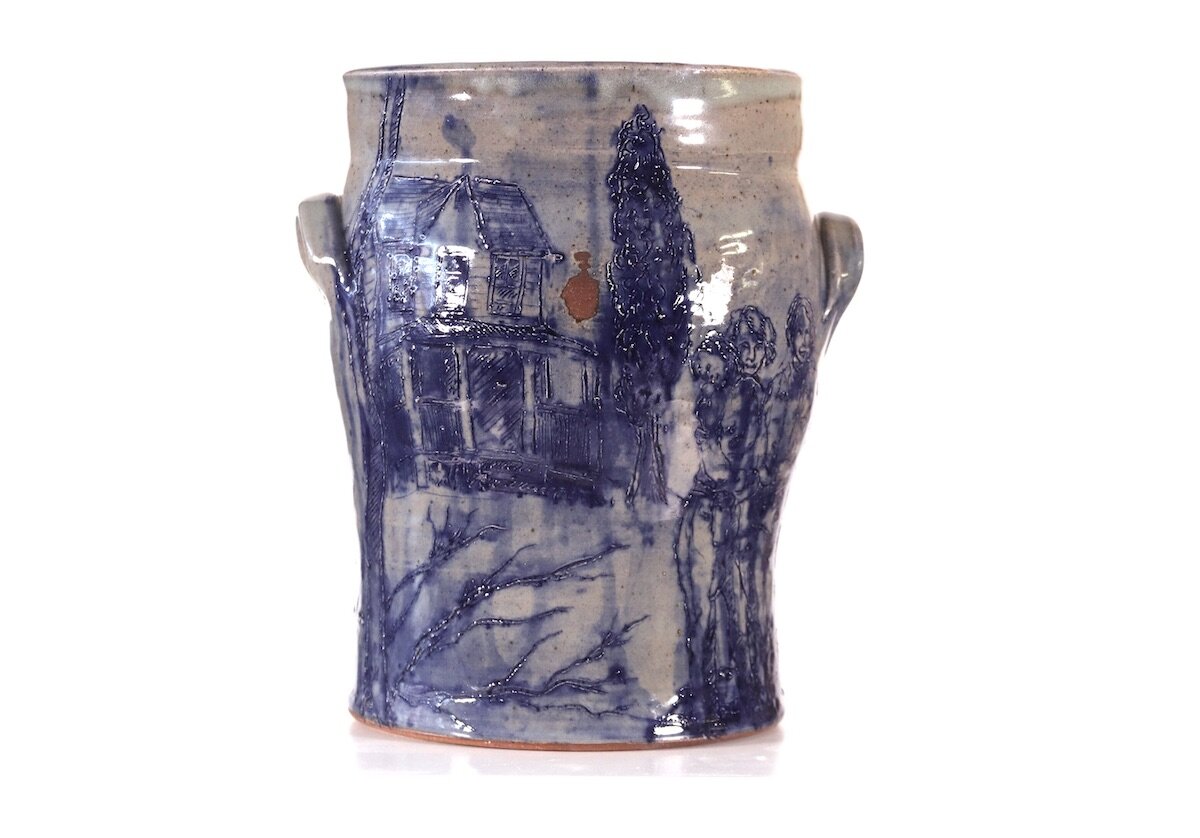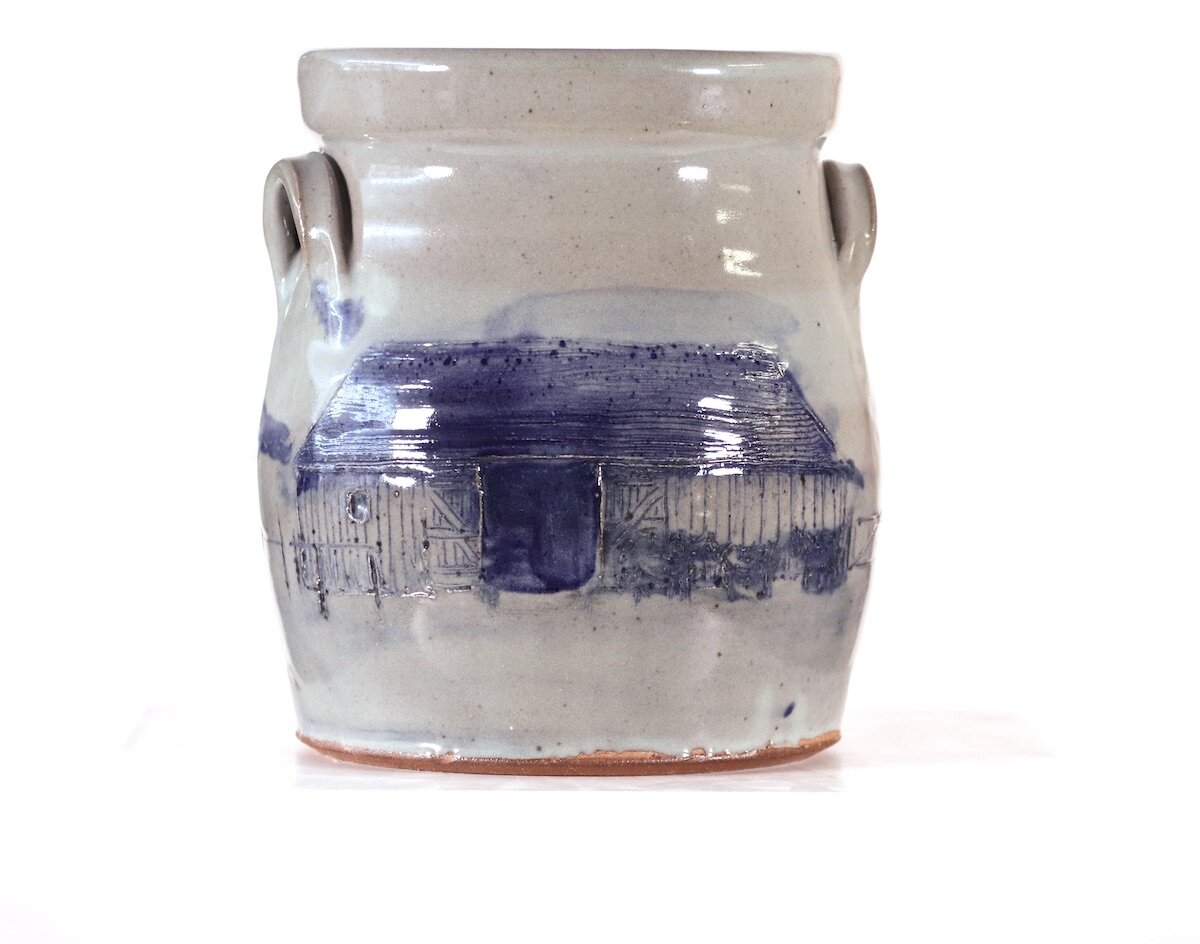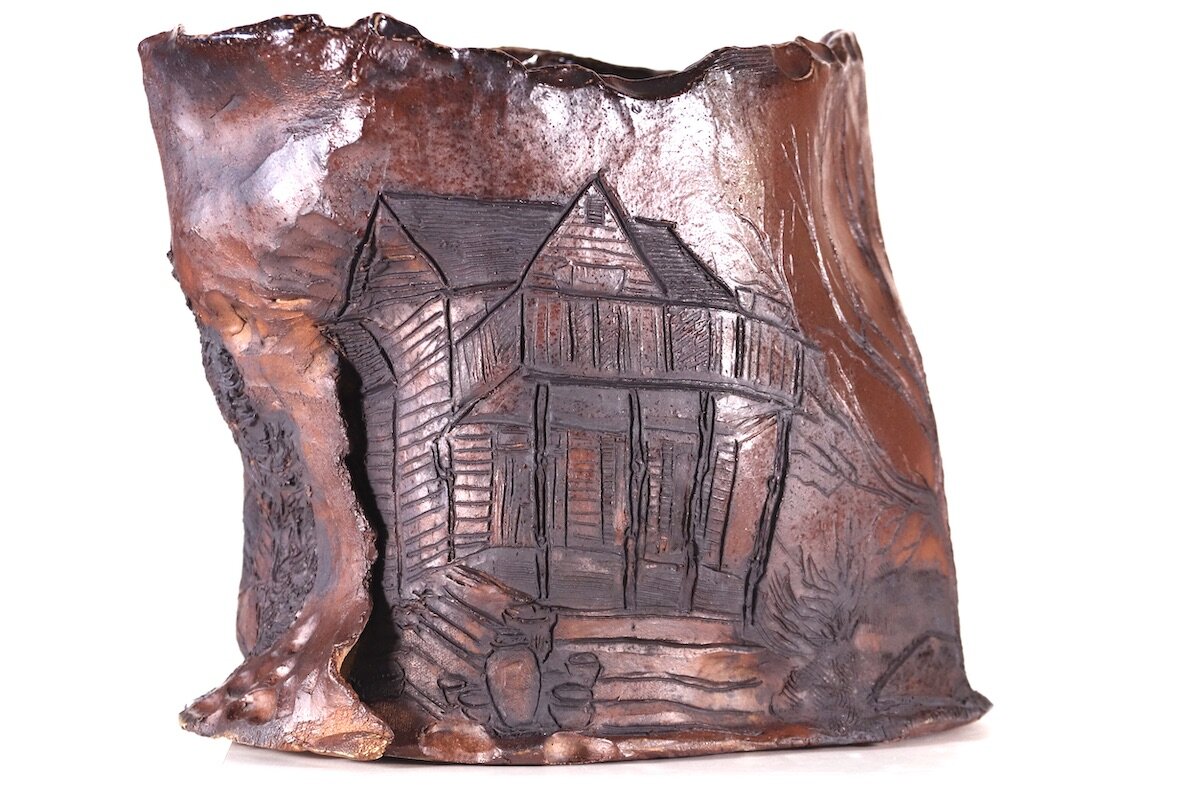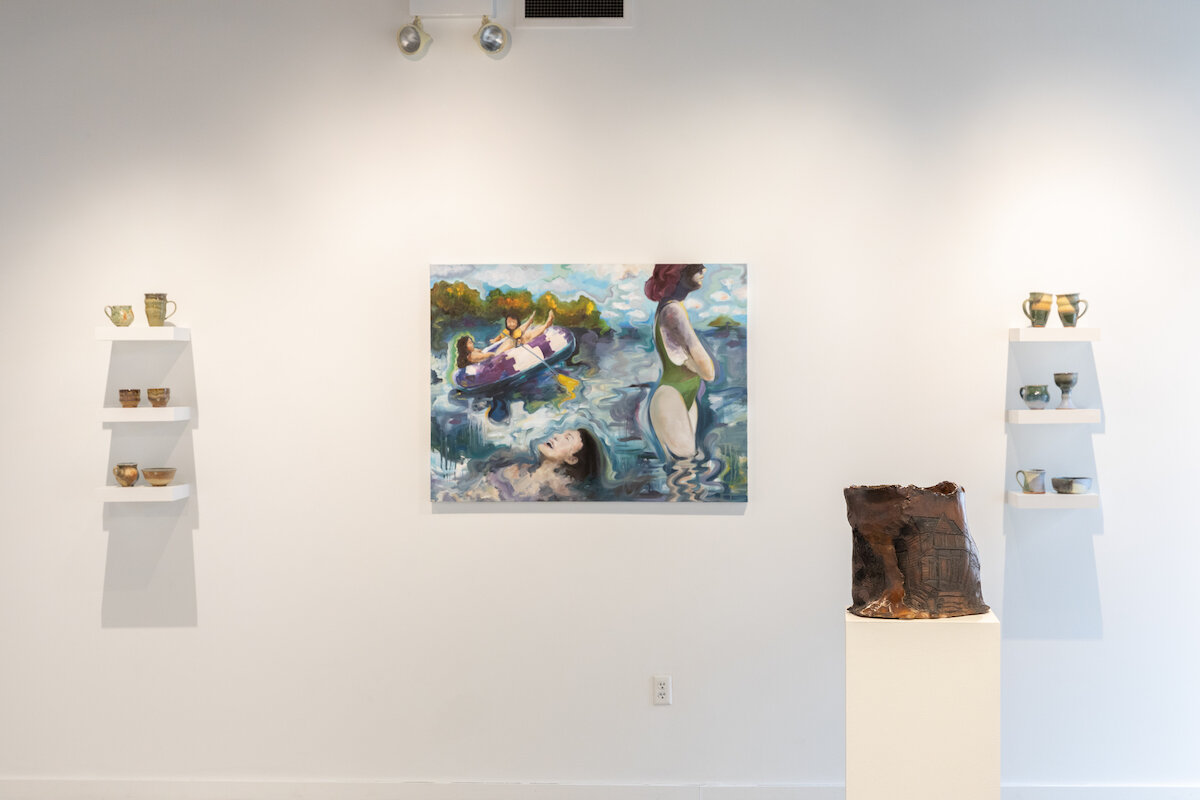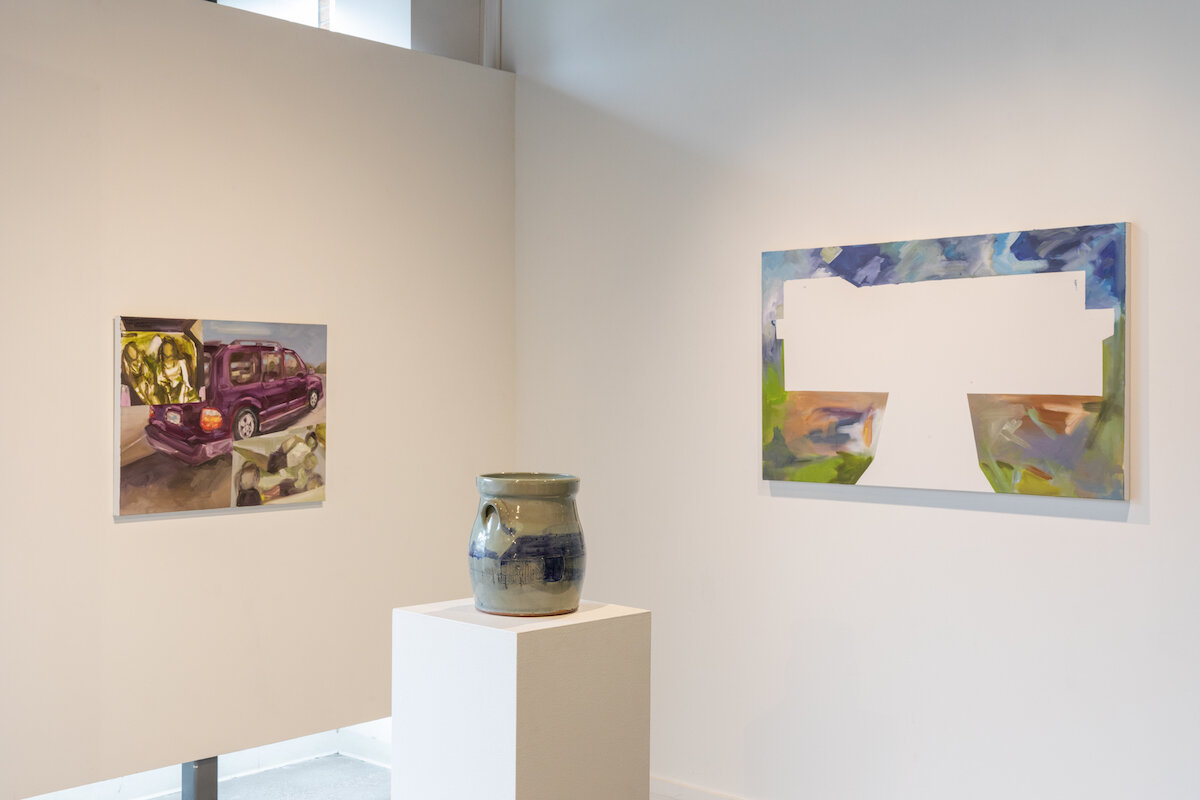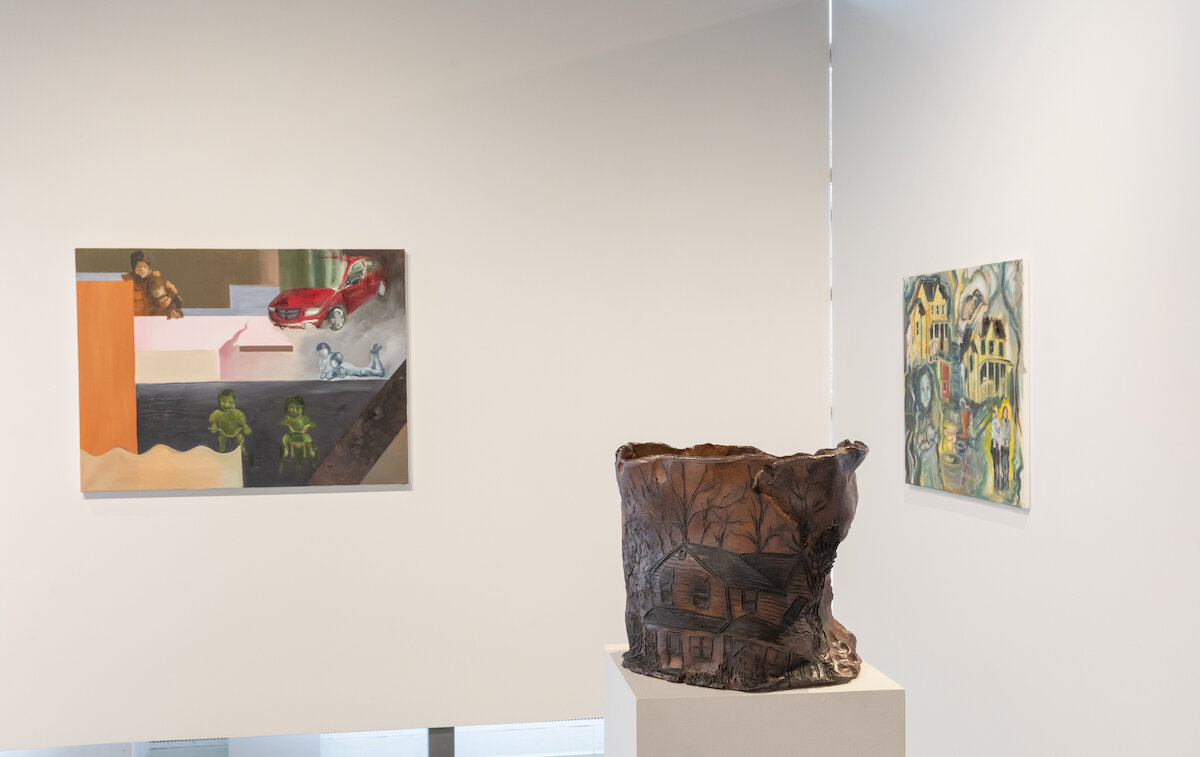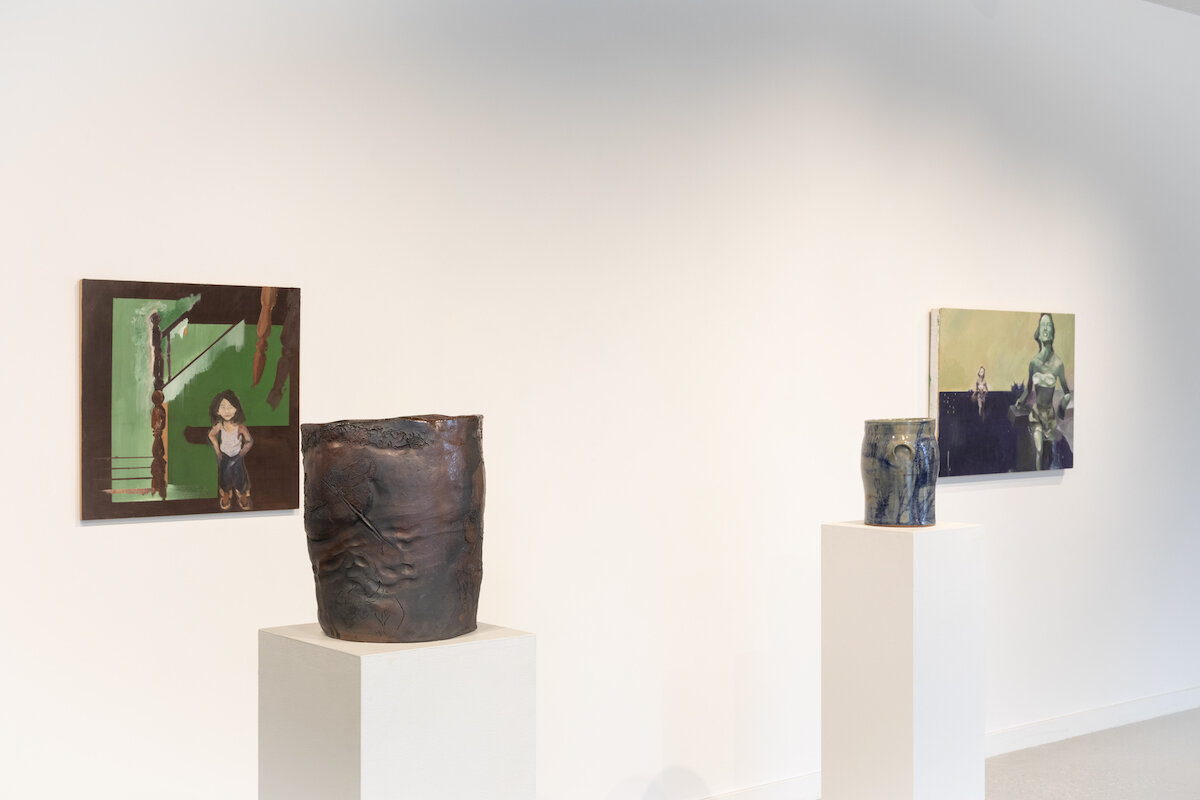A Conversation with May Mccalmon
One of My Homes
BFA, Michigan State University
Spring 2020
KP: What was your process for starting this project?
MM: While making this work, I had my senior show in the back of my mind, but I was focused on staying true to the subject matter that interests me. Memory and my person history has always been a large influence in my work. Family photos I've collected were the starting point that began to inform my work.
KP: With your paintings, was there any or what painting do you feel was the most challenging to create?
MM: My painting "Phyllis" is based of a photograph of my grandmother, so I felt a lot of pressure to capture her energy in that painting as well as to represent her features accurately. In other paintings that have more blocks of color I found some challenges because I was painting in a newer style by incorporating those flatter aspects.
KP: If you had an artist talk, what would you share with us that viewers may not know that you would want us to take away with us?
MM: My mom passed away when I was sixteen and that had an influence on my fixation with memory and representing images of lost times. It is important for me, as an artist, to be able to connect my experiences with those of others. I would be concerned about the art world and society in general if I thought that viewers could not relate or empathize in some way to my experience. In a time when we can so easily access the lives of others, it is important to focus on the ways we can relate with people from different backgrounds, rather than finding differences.
KP: With the installation views, is there a methodology on how the ceramic pieces are laid out in terms of the paintings they are next to?
MM: Yes, I had specific placements for the ceramic pieces and paintings based on content. There are recurring images in paintings and ceramics, particularly my childhood home is depicted in several variations. My show was also set up semi-geographically. As you progressed through my physical show, the work went from my childhood in my home in Maryland, to the impact of my family in Michigan whom I am very close with, back to home to emphasize my roots there, and finally ending on paintings and ceramics set in California, where my next steps will be. My father moved to California for the winters when I was in college, and I have a job there this summer.
KP: If you were to give an artist talk about the work, what would be the key thing you would want us to take away from it that we may not automatically see?
MM: My goal is for viewers to take away a feeling of nostalgia of their own lives. I realize that many people may not have had a positive childhood experience, but I also hope to address how those memories may be bittersweet. If someone decided to call their mom after seeing my show, I would find that an extremely endearing response to my work. Connections to loved ones are so important when life gets away from us.
KP: What would viewers gain from seeing this work in an installation as opposed to online?
MM: Experiencing the ceramic works in person allow the viewer to appreciate the intricacy of the line work, and get a better sense of the surface texture. Walking within the ceramics and seeing an image on a ceramic vessel reflected in a painting that is installed in line with the ceramic work is hard to capture in documentation images. It has been a great disappointment that people could not see this show in person.
KP: I always enjoy work that I feel I can connect to based of the power of memory, I think you did a great job of making a personal experience ambiguous for viewers to have 2 perspectives. I can gain from looking at your perspective and ponder on what this was for you, the influence it had, but I can also delve into myself and think if my childhood memories!
MM: Thank you!!
KP: Does this work feel resolved or will it be an ongoing project?
MM: This body of work as it was shown feels resolved, but my work will continue on this subject. I have more images from my life to work from, and I still feel that this defines my work.
